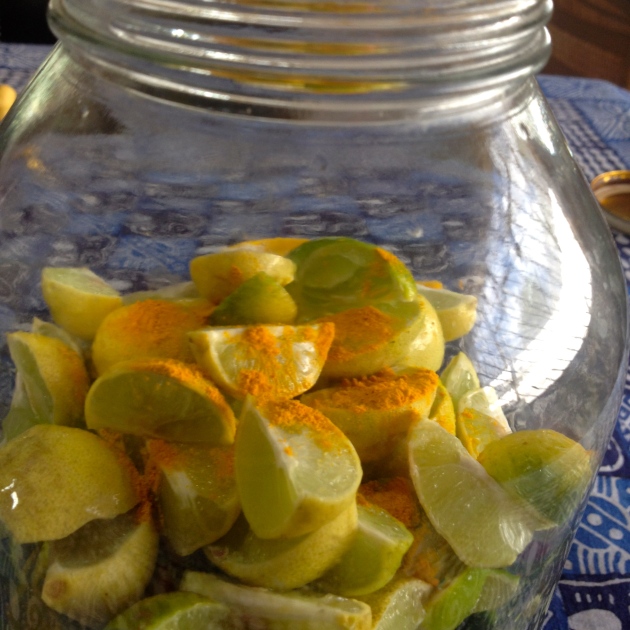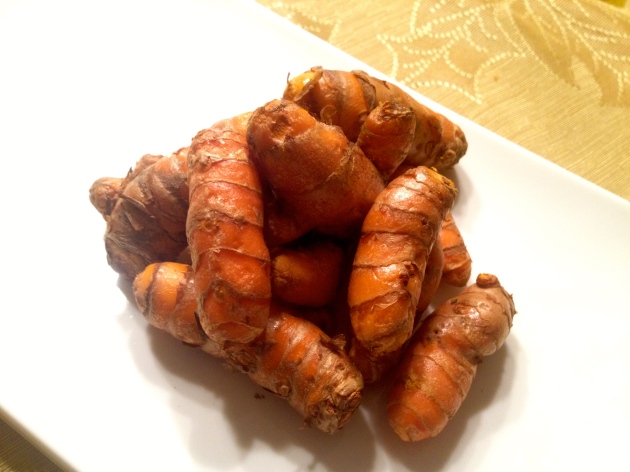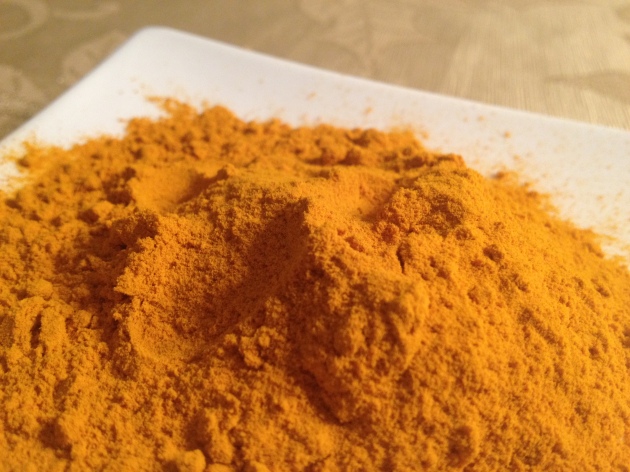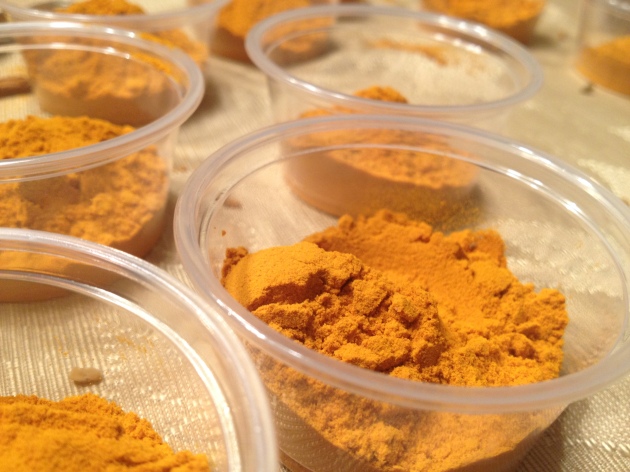Turmeric, turmeric, turmeric (haldi or hadur)… all the rage now! Everyone wants to talk about turmeric. And why not, there have been loads of evidence-based research that turmeric contains curcumin (not cumin) believed to be a cancer-fighting component. And it is a powerful anti-inflammatory too, amongst others.
Turmeric has been used in Indian cooking for ages. It is a bright yellow spice, primarily used to add vibrant color to the curries and rice dishes it anoints. Turmeric is simply and commonly known as poor man’s saffron in lieu of its color. As for the taste, turmeric has a slightly astringent and bitter taste that helps balance out the flavors in curries.
Turmeric comes from the rhizome family. In its raw unadulterated form looks nobly and almost bug like, and a tad bit leaner and less spicy that its cousin, the ginger root. They are several varieties of turmeric and they do vary slightly in appearance. The fresh turmeric root, is ultimately boiled to tenderize it because its very tough, then dried and finely ground into the bright yellow powder that we are so familiar with.
The flesh of the turmeric root is a rather vibrant orange. I would caution you when using this colorful root, if it does smear onto your clothes and fingers, it will be a while before it washes off. Raw turmeric root pairs well with fresh ginger and limes in a pickle, although recipes vary from one family to another.

Limes ready to be pickled are anointed with ground turmeric. Fresh turmeric can be added at this stage too.
Here are a couple of recipes from For The Love of Ghee that have turmeric as an ingredient. The taste of the turmeric changes depending on the cooking technique used to bring out its flavor.
In my chicken curry recipe, turmeric is layered amongst other spices and steamed to bring out a subtle flavor. Where as, in the Moong Dhaar recipe, the turmeric is added directly to the hot oil to bring out a more intense flavor. My Mum adds slices of the fresh turmeric root to lime pickle. These little orange discs taste a tad bit more pungent that the powdered form and leave a bit of a zing on the tongue when eaten (recipe in a future post).
Another popular recipe on For The Love of Ghee is Dhaar With Vegetables – (Lentil and Vegetable Curry) and you are going to love the story about my Naanima on this post.
So there you have it, my first post for My Spice Cupboard!




Nice blog thanks for postinng
LikeLike
Thank you! I’m glad you appreciate it 🙂
LikeLike
Thanks for the info! I ve never seen the fresh turmeric.
We use the dry one in Moroccan cuisine.
Looking forward to your next spice!
LikeLike
Well I’m excited that I was the first to introduce you to fresh turmeric Meriem! 🙂
LikeLike
Hurrah for your first spice post 🙂 Have never seen turmeric in the root form. I love how it changes the color of whatever it’s used with and I love the flavor, too. Excited to check out your recipes.
LikeLike
Thanks Liz! It has been a lot of fun writing these posts. A little different to writing a recipe and a memoir.
LikeLike
Wow, thanks for this information about turmeric! I drink it in hot milk most nights as a sleep aid, but I never knew it had cancer-fighting properties – bonus! 🙂 Would you grate it or slice it to add it to recipes (like dal) fresh, or recommend sticking to the powdered form?
LikeLike
Yum! I grew up drinking turmeric milk. Loved it and still do! I find it very comforting having the warm concoction, especially when I’ve had a super hard day! Like today, hence the late reply 😦
You know what I personally save the grated fresh turmeric for wet marinades as it’s so pungent. For Dhal I would probably stick to the powdered form but then again it doesn’t hurt trying it out and see if you like it. It really is a taste preference. Hope this helped a little 🙂
LikeLike
Great info, see this is one of those spices I hadn’t use! Will definitely try adding it to my next curry and see what happens. Any tips?
LikeLike
Sure give it a go and let me know. I would recommend trying it out with the chicken curry recipe. You will be happy 🙂
LikeLike